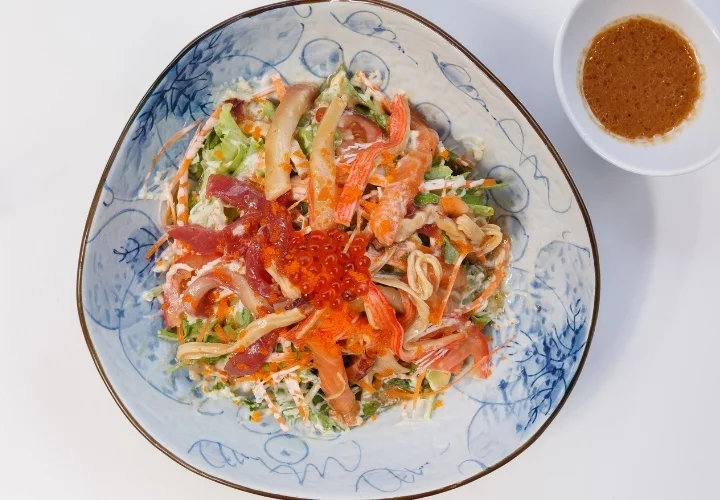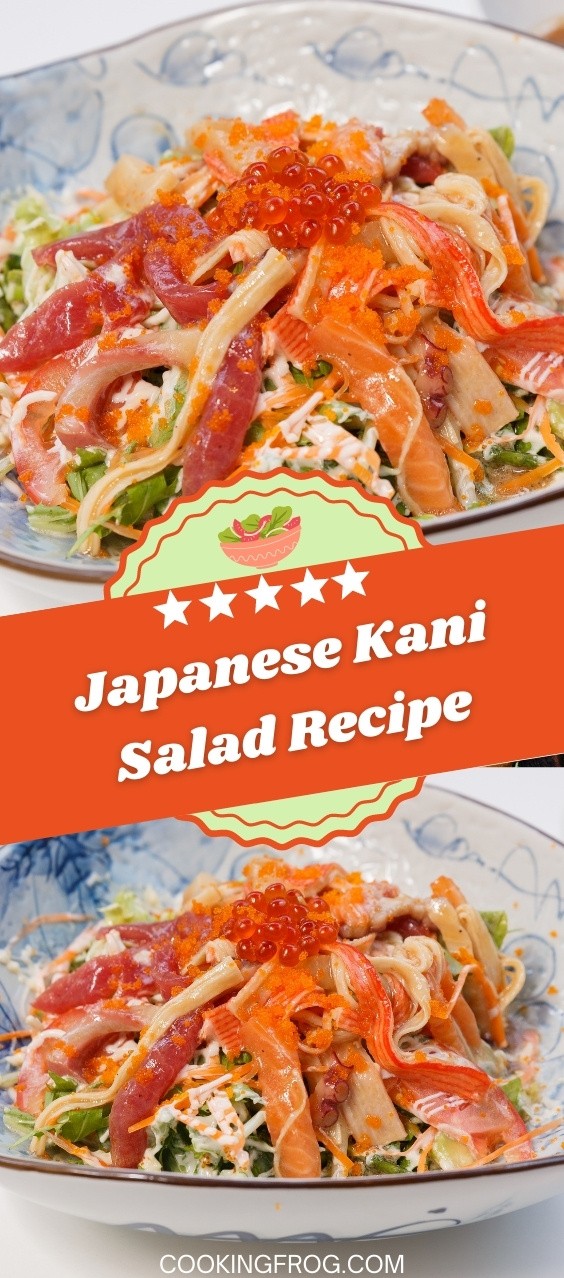Today, we’re going to make a Japanese easy Kani Salad recipe. Kani Salad is very refreshing, with a sweet touch of ripe mangoes in contrast to the light and savory flavors of Kani and Japanese mayo, which is very creamy.
Despite the popular notion, Kani Salad is not a conventional Japanese meal. Like a number of other dishes, it really first became popular in the United States. It was usually served at Japanese sushi restaurants that spread to other areas of the globe. The key element of this salad is, needless to say, the Kani.
What’s Kani?
Kani is widely known as a replica of crab meat, usually available in lots of Japanese dishes such as for example sushi. Kani really means “crab” in the Japanese language, and the imitation crab meat that people eat is named Kani Kamaboko or just Kanikami. Regardless of this, Kani is a widely accepted name for imitating crab meat.
These replica crab meats are produced from white fish, such as, for example Pollock, made to become a paste called surimi. They are created to taste near real crab. Each crab stick could be shredded easily and is colored in red, artificially and externally, to imitate the crab’s legs and appearance.
Kani is less expensive compared to crab meat, but needless to say, mimicking crab can’t compete with the actual crab’s nutrition. These crab sticks can be found at virtually all local food markets and can be purchased already cooked. It’s used as an element in a variety of Japanese dishes and street foods and is used all over the globe.
Making this Kani Salad really needs simple ingredients. An average Kani Salad contains an imitation of crab sticks, lettuce, iceberg, carrot, cucumber, and of course, Japanese mayo.
Ingredients
-
5 oz (140 g) kani (crab sticks or imitation crab)
-
1 medium carrot
-
2 medium cucumbers
-
1 ripe mango
-
½ cup Japanese mayonnaise (e.g., Kewpie)
-
Juice of ½ lemon
-
Salt and freshly ground black pepper, to taste
Instructions
-
Prepare the Vegetables
-
Peel the carrot and trim the ends. Cut into julienne strips (about 3 inches long).
-
Peel the cucumbers, trim the ends, and cut into julienne strips as well — remove the soft core with seeds before slicing.
-
-
Shred the Crab Sticks
-
Gently press each kani stick from one end to the other to loosen the fibers.
-
Separate the strips by hand until fully shredded.
-
-
Cut the Mango
-
Peel the mango and slice the flesh away from the pit.
-
Stack the slices and cut into thin strips.
-
-
Mix the Salad
-
In a large bowl, combine the carrot, cucumber, kani, and mango.
-
Add the Japanese mayonnaise and lemon juice. Toss gently until everything is evenly coated.
-
-
Season and Serve
-
Season with salt and pepper to taste. Toss again.
-
Serve immediately, or refrigerate for up to 2 hours before serving for a chilled version.
-
For extra freshness, serve over a bed of iceberg or romaine lettuce.
-
Tips:
-
For more flavor, sprinkle a little toasted sesame seed or drizzle sesame oil before serving.
-
If you want extra crunch, add thinly sliced red bell pepper.
-
Always use ripe, but firm mango for the best texture.
Share the image below to your Pinterest below if you like this Kani Salad Recipe!
Kani Salad Toppings
- Tobiko: Japanese fish roe that adds to the sea-food taste in your Kani Salad.
- Black Sesame Seeds: could make a good contrast while adding a crunchy and nutty texture to your Kani Salad
- Panko Breadcrumbs: Japanese form of breadcrumbs which are processed to be like flakes. Panko adds a crunchy and crispy texture to your Kani Salad.
- Gomashio: a seasoning from Japan produced from sesame seeds and salt. Gomashio will add to a crunchy texture and nutty flavor to this Kani Salad.
The recipe for this Kani Salad is straightforward. The only addition to it is ripe mango to provide it with a richer flavor that’s sweet and savory with a touch of tanginess.



